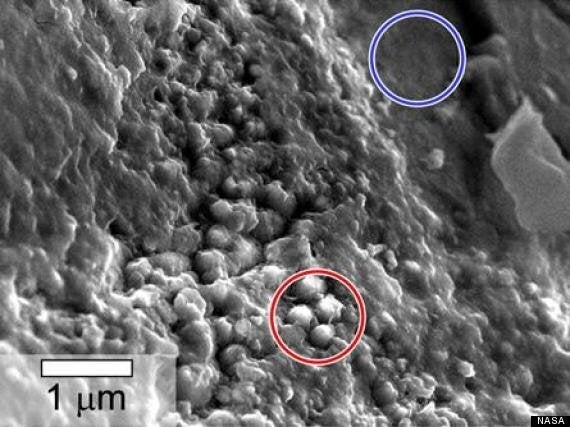A meteorite containing strange tunnels and spheres might be evidence that water once flowed on Mars - and that the planet might have been able to host life.
The 30-pound Yamato 000593 meteorite, discovered in Antarctica in 2003, was studied by researchers looking for evidence about our nearest neighbour's ancient history.
While NASA currently has two operational rovers on Mars' surface, and other craft in orbit, meteorites which have fallen to Earth after larger strikes on the planet are crucial evidence as to its past.

Above: Scanning electron microscope image shows spheroidal features in a layer of iddingsite, a mineral formed by action of water
Now researchers at Johnson Space Center in Houston and the Jet Propulsion Laboratory say there are "structures" inside the rock which suggest biological processes were once in action within it. (Not 'life' - the researchers do not even use that word in their paper, Space.com carefully notes).
"While robotic missions to Mars continue to shed light on the planet's history, the only samples from Mars available for study on Earth are martian meteorites," lead study author Lauren White told UPI.
"On Earth, we can utilize multiple analytical techniques to take a more in-depth look into meteorites and shed light on the history of Mars."
It's not certain that biological processes are to blame for the "unique" marks inside the rocks, which suggest the movement of water in clay and "carbonaceous matter", but there's a chance - and that's valuable information, JPL said.